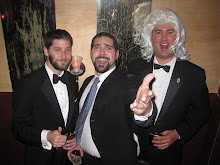Tammy Tuck of City Paper tries to understand why the prices of local craft beers are so high in the District compared to notoriously expensive cities like San Fransisco:
Ok, so good things cost money. But, surely it wasn't always like this, right?"Ask craft-beer folks about prices and they tend to stress their product’s artisan quality. Of course you can find some cheaper swill, the logic goes. But it’ll be made with rice or corn instead of barley and other fine grains. A can of National Bohemian, for instance, will set you back just $3 at Smoke & Barrel—and a mere $2 at the Raven. To craft devotees, that’s like opting for a McDonald’s burger."
"The modern craft beer movement began in California. Pioneering breweries, like Anchor and Sierra Nevada, have been in operation since the late ’70s and early ’80s, when lower-priced mass market brews set the tone for the industry. In contrast, D.C.’s beer scene came of age much later and grew out of the rising popularity of Belgian beers, which tend to fetch higher prices to begin with."
But what about the global brewing giants? It's not unusual for a mega-corporation to exert influence in the market. Tuck explains:
Ah, so maybe if we examine the distributor level of the business we can find some answers for consumers. What about them? Aren't they being a little greedy?"Another big factor impacting the price of craft beer at the distributor level is the bigfooting influence of Big Beer [...] In other words, when the price of Blue Moon, a Coors product, goes up a buck, your beloved Bell’s Two Hearted Ale may suddenly suck up another one of your singles, too."
"Craft aficionados, of course, love to gripe about the middleman. And it makes sense: The distributor isn’t anyone’s beloved local beer bar, and he’s not anyone’s innovative craft brewer, either."
Unfortunately, the new wave of establishments that we love and which bring vitality to so many Washington D.C. neighborhoods may have a part to play in the price:
"every one of the complaints leveled against wholesalers and distributors could be leveled in other markets too. To understand D.C.’s price situation, it makes more sense to look at those snazzy, beer-focused taverns that have sprung up here over the past decade"
Not surprisingly, the upward trend ultimately rests on the consumers themselves:
"The District’s neighborhood politics—which make it very easy for local residents to get in the way of liquor licenses, adding new costs for retailers—also pushes prices above where they’d be elsewhere. Washington may have seen a gastro-pub population boom, but many of those births required tavern owners to hire pricey lawyers to navigate Advisory Neighborhood Commissions, who are able to wring sometimes costly concessions from new establishments. The overall effect also reduces competition."
As a former bartender at Tonic at Quigley's Pharmacy when they spent a year struggling for a liquor license, I had a window into the political side of all this. DC's ostensibly grass-roots neighborhood governing system presented more than a few hurdles for Tonic's owners in 2008.
And while few people openly complain, there have been comments made mostly by tourists and out-of-towners in Tonic about the cost of fare and booze seeming a bit excessive. But what are the owners going to do when they have more than a year's worth of legal bills?


No comments:
Post a Comment